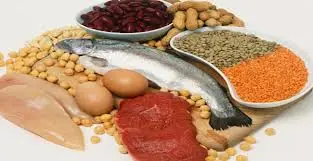In today’s fast-paced world, understanding optimal Protein for Better Health consumption has never been more crucial for metabolic health and overall wellness. While Jason Vale, renowned as ‘The Juice Master’, identifies protein as one of the “six essential dietary needs,” modern nutritional science reveals it’s not just about getting enough protein – it’s about getting the right types at the right times for optimal protein absorption and tissue repair.
The Fundamental Role of Protein in Human Health
Essential Functions and Benefits

Protein synthesis is at the core of numerous bodily functions, from muscle maintenance to immune system function. Every cell in your body, from your brain to your toenails, relies on protein metabolism for proper functioning. Recent clinical trials have shown that optimal Protein for Better Health intake can significantly impact:
- Muscle growth and recovery
- Bone health maintenance
- Immune system strengthening
- Skin, hair, and nail health
- Energy levels and concentration
- Weight management and satiety
Understanding Protein Quality
Complete vs. Incomplete Proteins
Not all protein sources are created equal. The protein quality score system helps us understand the difference between:
- Complete proteins (containing all essential amino acids)
- Incomplete proteins (missing one or more essential amino acids)
- Protein bioavailability factors
Daily Protein Requirements
Personalized Protein Needs
Modern protein research findings suggest varying needs based on:
- Age (protein for seniors vs. protein for children)
- Activity level (protein for athletes vs. sedentary individuals)
- Health conditions (protein for diabetics, healing, etc.)
- Dietary preferences (protein for vegetarians)

Protein Calculation Guide
The recommended dietary allowance (RDA) varies, but general guidelines suggest:
- Sedentary adults: 0.8g per kg of body weight
- Active adults: 1.2-2.0g per kg of body weight
- Athletes: Up to 2.2g per kg of body weight
- Pregnant women: Additional 25g daily
Best Protein Sources
Animal-Based Proteins
High-quality protein sources include:
- Wild-caught fish (salmon, tuna, sardines)
- Organic chicken and lean meats
- Eggs
- Grass-fed protein options
Plant-Based Proteins
Sustainable protein sources include:
- Legumes (beans, peanuts, peas)
- Nuts (almonds, Brazil nuts, walnuts)
- Seeds (sunflower, pumpkin)
- Avocados
- Green vegetables (broccoli, spinach)
Optimal Protein Timing
Protein Schedule Optimization
For maximum protein efficiency ratio:
- Post-workout protein timing
- Protein before bed benefits
- Breakfast protein importance
- Protein meal timing strategies
Special Considerations
Health-Specific Protein Needs
Different life stages and conditions require specialized attention:
- Protein during pregnancy
- Protein for bone health
- Protein for healing
- Protein after surgery
- Protein for hair growth
Practical Implementation
Quick Protein Meals
Easy protein sources for busy lifestyles:
- Travel-friendly protein options
- Budget-friendly protein choices
- Quick protein snacks
- Protein-packed meals

Seasonal Protein Planning
Adjust your protein consumption based on:
- Summer protein foods
- Winter protein options
- Seasonal availability
- Local sourcing
Common Myths and Facts
Protein Myths Debunked
Latest protein nutrition studies address:
- “All protein must come from meat”
- “Plant proteins are inferior”
- “More protein is always better”
- “Protein timing doesn’t matter”
Environmental Impact
Sustainable Protein Choices
Consider these factors:
- Protein environmental impact
- Ethical protein sources
- Clean protein options
- Future of protein
Conclusion and Recommendations
Making informed choices about protein consumption is crucial for overall health. Focus on:
- Variety in protein sources
- Proper timing
- Individual needs
- Sustainable choices
FAQ Section
Common questions about protein:
- How much protein do I need daily?
- When is the best time to consume protein?
- Can I get enough protein from plants?
- What are the best protein sources for vegetarians?

